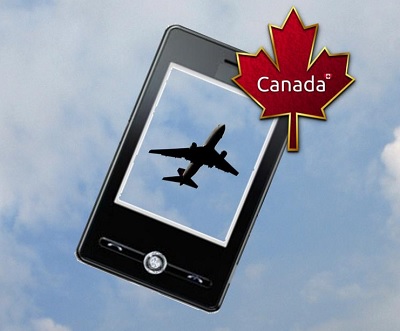The country is relaxing the regulations regarding the use of smartphones and tablets while in the air.
It won’t be long before travelers in Canada will be able to use their electronic and mobile devices at any time they want during a flight, including everything from smartphones to tablets and laptops.
That said, they will still be restricted from using WiFi and making cellular phone calls.
Lisa Raitt, the Minister of Transportation in Canada recently made the announcement that travelers will be able to use their mobile devices and other forms of electronic technology such as portable games, cameras, laptops, e-readers, tablets, and even smartphones, from the time that the flight takes off to its touchdown. That said, it will be possible only as long as the transmission capabilities of the gadget have been disabled.
The rules for mobile devices during flights have been an issue of great debate over the last few months.
 A few months ago, federal officials in Canada began working with the airline industry and its various carriers in order to help to make this change. Air Canada, the largest airline in the country has already announced that it is ready to implement the change to the regulations “very shortly” and that it could start to fly under these less restrictive regulations within the next few days.
A few months ago, federal officials in Canada began working with the airline industry and its various carriers in order to help to make this change. Air Canada, the largest airline in the country has already announced that it is ready to implement the change to the regulations “very shortly” and that it could start to fly under these less restrictive regulations within the next few days.
Raitt explained that this decision is “good news for air passengers and it’s good news for the Canadian aviation industry,” as she spoke to the media at Ottawa International Airport in the country’s capital. She added that she understands some of the challenges faced by travelers, today, who are required to shut off devices, saying that “as a mom of a 12- and a 9-year-old, I’m pretty happy that we don’t have to go through the whole, I would say, drama of turning off your Nintendo DS in the middle of a really important game.”
This recent change in the rules for the use of mobile devices aligns the regulations in Canada with those that are currently in place in the United States as well as in the European Union, which had each announced their own intentions for this gadget use in 2013.

